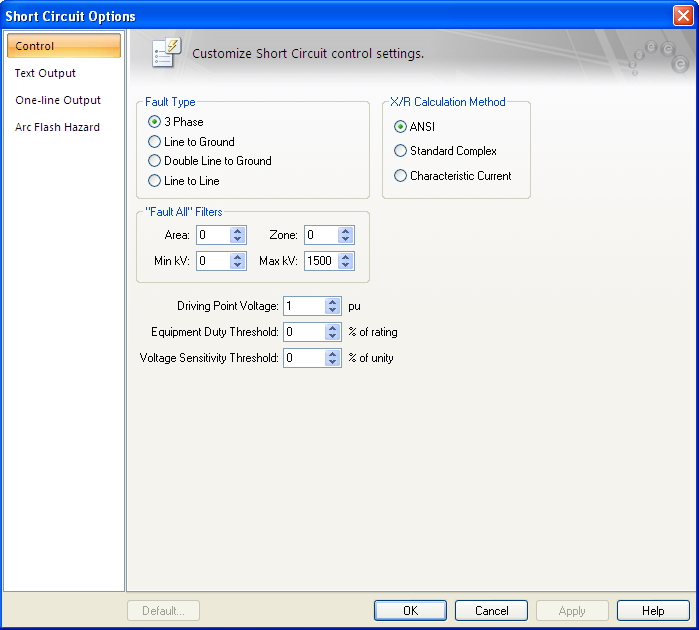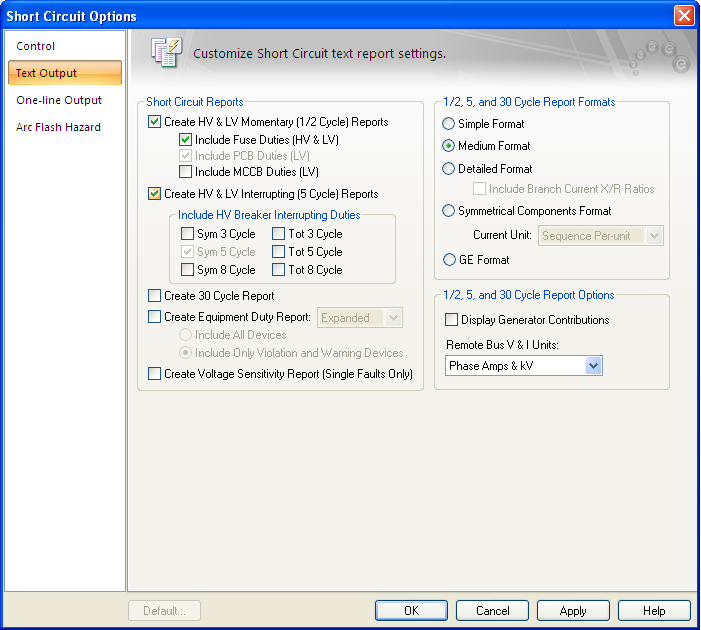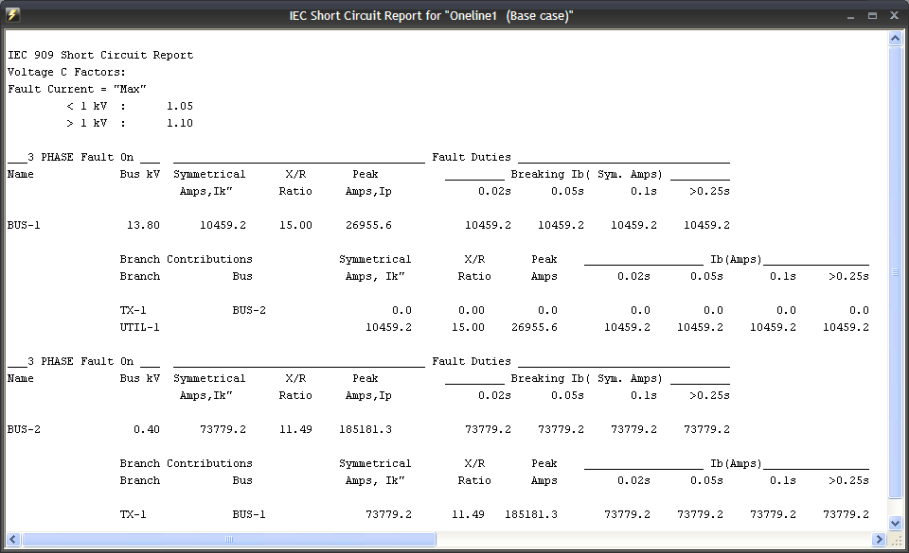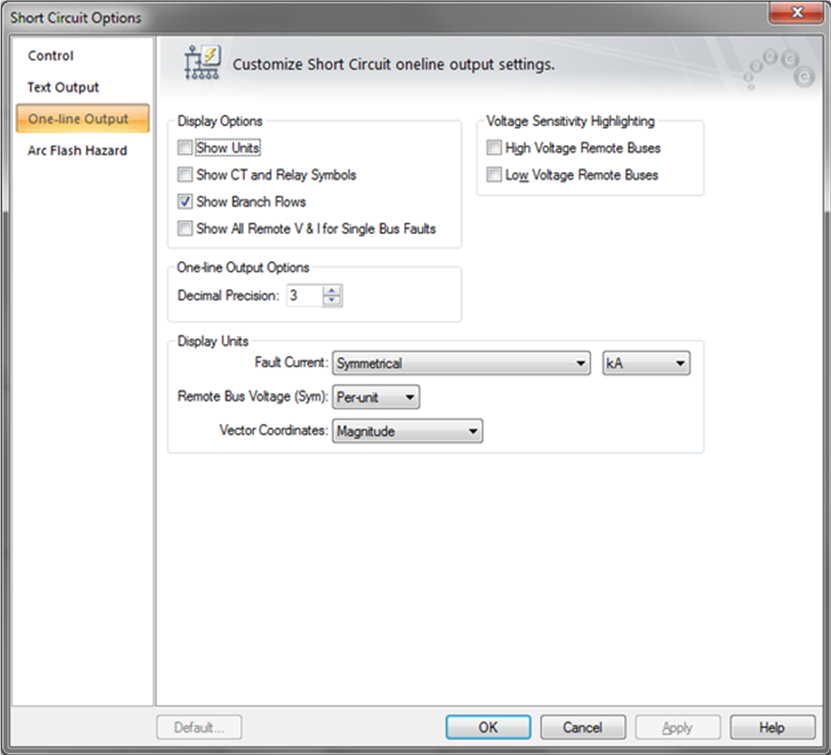 SC Options in the ribbon, and select the Control tab to specify various parameters for controlling the behavior of a short circuit study.
SC Options in the ribbon, and select the Control tab to specify various parameters for controlling the behavior of a short circuit study.The following information describes the IEC options for short circuit, which are controlled in the Short Circuit Options dialog box.
Click  SC Options in the ribbon, and select the Control tab to specify various parameters for controlling the behavior of a short circuit study.
SC Options in the ribbon, and select the Control tab to specify various parameters for controlling the behavior of a short circuit study.

Figure 1: Control Tab of Short Circuit Options Dialog Box
Fault Type: Four different types of faults are available during a short circuit analysis. The default is 3 Phase, which is generally used to determine the highest available currents for equipment duty comparisons and relaying. The other types, Line to Ground, Double Line to Ground, and Line to Line, are generally used for specialized relaying applications or system troubleshooting. You can also select the type of fault using the short circuit toolbar buttons.
"Fault All" Filters: Enables you to specify a specific bus Area, Zone, and kV Range that will be faulted and reported when you click  Fault Bus(es). When both Area and Zone are set as zero, then all buses within the specified kV range are selected for fault calculations.
Fault Bus(es). When both Area and Zone are set as zero, then all buses within the specified kV range are selected for fault calculations.
Equipment Duty Threshold: Sets the lower limit for flagging breaker violations in SmartDuty™. If the threshold is set to -10 percent, SmartDuty™ flags all equipment which has short circuit duties within 10 percent of their maximum rating (greater than 90% of their rating).
Note: You must click  Equipment Duty for this field to have any effect on the one-line result output. You must select the Equipment Duty check box in the Text Output tab of the Short Circuit Options dialog box for this field to have any effect for text result output.
Equipment Duty for this field to have any effect on the one-line result output. You must select the Equipment Duty check box in the Text Output tab of the Short Circuit Options dialog box for this field to have any effect for text result output.
Note: The ability to automatically check equipment duties during analysis is only available if you have purchased the SmartDuty™ option to EasyPower.
In the Short Circuit Options dialog box, select the Text Output tab to specify various parameters for controlling the text reports during the study. Text results are displayed in individual result windows which can be scrolled, reviewed, and printed at your discretion.

Figure 2: Text Output Tab of the Short Circuit Options Dialog Box
Create Short Circuit Report: Select this check box to enable creation of the IEC short circuit report after faulting bus(es). Multiple result windows can be displayed and studied at the same time clicking Window from the ribbon bar and selecting Tile Horizontal.
Create Equipment Duty Report: Creates a report with current flows through every breaker and evaluates the fault currents (breaker duty) in percentage of breaker rating.

Figure 3: Example Short Circuit Report
In the Short Circuit Options dialog, select the One-line Output tab to specify various parameters for controlling what is output to the one-line during the short circuit study.

Figure 4: One-line Output Tab of the Short Circuit Options Dialog Box
Display Options: Enables you to control what appears on the one-line while performing short circuit calculations. You can show or hide the following outputs.
Decimal Precision: This sets the number of digits past the decimal point for values displayed on the one-line.
Fault Current: Enables you to choose the unit of fault current and the type of current. You can display on the one-line the following types of currents:
The following fault current units are available for display in the one-line:
Vector Coordinates: Enables display format as:
| IEC Short Circuit Reference | |
| Setting the Short Circuit Method | |
| Faulting a Bus |